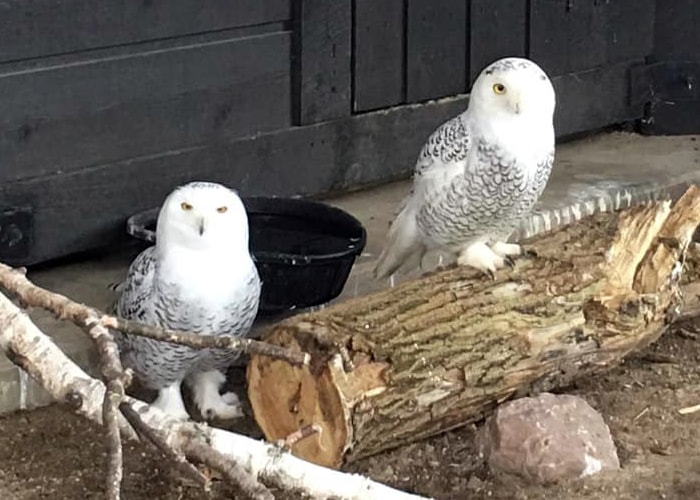Snowy Owl
Bubo scandiacus
Conservation Status: Least Concern
Characteristics:
- Average height is 20” to 28” with a wingspan of up to 5’.
- Average weight is 3.5 to 6.5 lbs. Males tend to be smaller
- Males are mostly white, while females have black flecks.
Lifespan: In the wild, 8 plus years. In captivity, 25 plus years.
Range and Habitat:
- During the breeding season, Snowy owls nest in Alaska and Canada.
- In the winter, they travel into the northern United States.
- Treeless, open spaces.
- They often sit on the ground to hunt, so they prefer terrain where they can easily search for prey

Diet:
- The Snowy owl’s preferred meal is lemmings.
- An adult can eat up to 1,600 lemmings each year – that is 3 to 5 each day!
- They also eat other rodents, rabbits, birds, and fish.
Behavior:
- Unlike most other owl species, Snowy owls hunt mainly in the daytime.
- They are highly nomadic, and their movements are correlated to lemming populations.
- They aggressively defend their nests and will attach anything that disturbs them.
Fun Facts:
- Lemming populations are cyclic and in years when lemming populations are down Snowy Owls often leave the arctic regions and fly south in search of food. About once every four years Snowy Owls are found as far south as the northern and central United States.
- The feathers of Snowy Owls have no pigment, leaving more space for air which helps them to keep warmer because air is such a good insulator.
- Hedwig in the Harry Potter series is a snowy owl.
- Ochsner Park Zoo is the only zoo in Wisconsin to see Snowy owls.
Keeper Notes:
Sven, the male, was born in 2017 and came to the zoo in 2019. Sven was injured in the wild. He was treated at Cornell University’s Janet L. Swanson Wildlife Health Center then sent to the Utica Zoo. Sven had his eye removed due to a complicated fungal keratitis that did not respond to treatment. He also lost his wing due to a large wound when he arrived at the Heath Center. Sven was recommended to the zoo through the AZA Snowy owl breeding program which determined based on genetics. With Sven and Aurora being wild hatched birds, genetically they are quite different from other captive bred birds.
Aurora was born in 2013 and taken in by rehabbers. Aurora could not be released back into the wild due to eye damage and came to the zoo in 2016.

